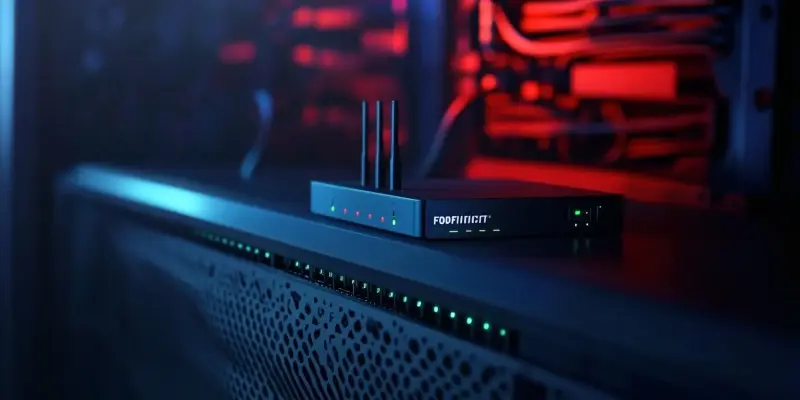In the ever-evolving landscape of network security, the recent discovery of a significant flaw in Fortinet’s Wireless LAN Manager (FortiWLM) has brought to light the grave risks posed to digital infrastructures worldwide. The vulnerability, identified as CVE-2023-34990, has the potential to leak sensitive information and allow unauthorized admin access, signaling an urgent need for immediate remedial action. This flaw, with an alarming CVSS score of 9.6, was initially patched in September 2023, but the severity of the issue continues to echo within the cybersecurity community.
The Vulnerability Breakdown
FortiWLM Versions Affected
The security flaw in question spans across multiple versions of the FortiWLM product, notably affecting versions from 8.6.0 to 8.6.5, with a fix provided in version 8.6.6, and versions from 8.5.0 to 8.5.4, fixed in version 8.5.5. The vulnerability, known as CVE-2023-34990, was initially disclosed by Fortinet in March as part of a broader announcement of six vulnerabilities within the FortiWLM framework. Cybersecurity researcher Zach Hanley from Horizon3.ai played a pivotal role in identifying and reporting this particular flaw.
Hanley’s insights revealed that the root cause of the vulnerability lay in insufficient input validation on request parameters. This lapse allows attackers to exploit the system via requests sent to the /ems/cgi-bin/ezrf_lighttpd.cgi endpoint, effectively bypassing intended security measures. By navigating through the system in this manner, attackers can read any log file present within the FortiWLM, dramatically increasing the scope and impact of potential attacks.
Exploitation Potential
The implications of a successful exploitation of CVE-2023-34990 are profound. Attackers gaining access through this vulnerability can obtain a user’s session ID, which significantly raises the risk of further exploitation of authenticated endpoints and session hijacking. This chain of events could culminate in gaining full administrative permissions, owing to the static nature of web session IDs between different user sessions. Such access could allow malicious actors to manipulate the network and execute commands with devastating effects.
Further exacerbating the situation, when CVE-2023-34990 is combined with another flaw, CVE-2023-48782, the threat becomes even more ominous. CVE-2023-48782, an authenticated command injection vulnerability rated with a CVSS score of 8.8 and patched in FortiWLM 8.6.6, opens the door for remote code execution within a root context. This combination of vulnerabilities underscores the critical need for users to promptly update their systems to the latest firmware versions.
Expansion of Vulnerabilities
FortiManager Command Injection Flaw
Fortinet’s woes do not end with FortiWLM. Another high-severity vulnerability, CVE-2024-48889, has been identified in FortiManager, an operating system command injection flaw with a CVSS score of 7.2. This vulnerability permits authenticated remote attackers to execute unauthorized code on the system via FGFM-crafted requests. Affected FortiManager versions range from 7.6.0 (rectified in 7.6.1) to earlier iterations like 7.4.0 to 7.4.4, fixed in version 7.4.5, and several other versions up to 6.4.14, which were resolved in version 6.4.15.
Notably, the vulnerability also impacts older hardware models like the 1000E, 1000F, and various series within the 3000 and 3500 families if the “fmg-status” feature is enabled. This widespread impact of security flaws highlights an overarching trend within the Fortinet ecosystem, where multiple products are becoming more frequent targets for malicious actors. This development serves as a potent reminder for companies to remain vigilant and proactive in their cybersecurity measures.
Targeting Fortinet Devices
The increasing incidence of vulnerabilities within Fortinet devices marks a concerning trend for cybersecurity professionals. Threat actors are increasingly zeroing in on these devices, leveraging identified flaws to infiltrate and compromise network infrastructures. Fortinet’s products, integral to many organizational networks, thus require stringent and timely updates to mitigate these evolving threats.
In response, it becomes paramount for users to ensure their systems are consistently updated to the latest firmware to fortify their defenses against potential attacks. This vigilance is crucial, given the sophistication and persistence of modern cyber threats that continually adapt to exploit newly discovered vulnerabilities. Organizations must adopt a proactive stance, regularly auditing their network defenses to identify and rectify potential security gaps.
Lessons and Next Steps
Importance of Timely Patching
The scenario surrounding Fortinet’s vulnerabilities serves as a testament to the critical importance of timely patching in network security management. Cybersecurity threats are perpetually evolving, and static defenses are no longer sufficient to thwart these dynamic risks. Organizations must prioritize the patching of identified vulnerabilities to prevent exploitation and safeguard sensitive information.
Fortinet’s alert regarding CVE-2023-34990 highlighted the potential for remote and unauthenticated attackers to read sensitive files via relative path traversal flaws. This capability extends beyond mere reading of log files to potentially executing unauthorized code or commands through specifically crafted web requests. Such high-stakes vulnerabilities necessitate swift action to patch and secure systems against emerging threats.
Evolving Cybersecurity Landscape
In the constantly changing realm of network security, a major flaw recently uncovered in Fortinet’s Wireless LAN Manager (FortiWLM) has highlighted the serious dangers threatening digital infrastructures across the globe. This vulnerability, which is identified as CVE-2023-34990, has the capacity to expose sensitive data and provide unauthorized admin access. This discovery points to an urgent requirement for prompt corrective measures. With an alarming CVSS score of 9.6, this flaw was initially addressed with a patch in September 2023. However, the severity and potential impact of the issue continue to resonate deeply within the cybersecurity community. The ongoing concern reflects the broader challenges faced by network security professionals who are continually battling to protect systems from new and evolving threats. As the digital world grows more complex, staying updated and proactive in applying security patches becomes all the more crucial to ensure the integrity and safety of sensitive information and infrastructure.

